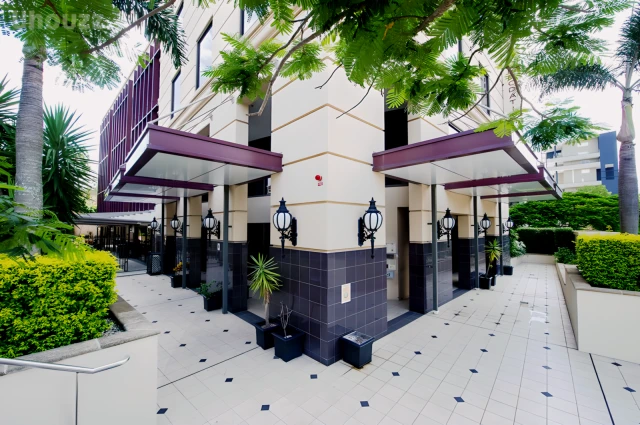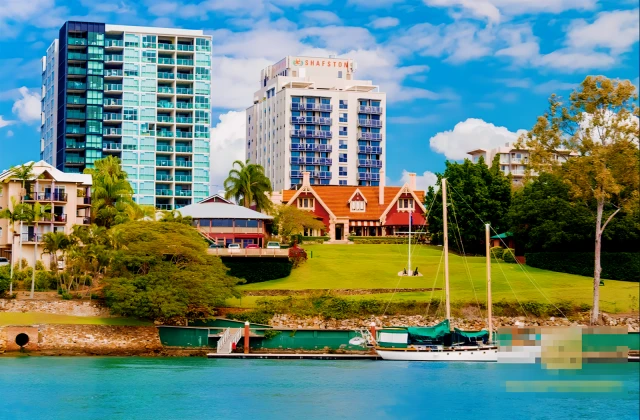It is advisable to start looking for student accommodation in Brisbane as early as possible, preferably several months before your intended move-in date. This allows you to explore various options, compare prices and amenities, and secure a suitable place to live before the start of the academic year. Additionally, popular accommodation options may fill up quickly, so starting your search early gives you the best chance of finding a place that meets your needs and preferences.
Log in
Become Partner
Language
中文
English
繁體中文(中國香港)
繁體中文(中國台灣)
Tiếng Việt
Get in Touch
Student Accommodation in East Brisbane, Brisbane
Student Accommodation in East Brisbane, Brisbane
About East Brisbane
East Brisbane, an inner southern suburb of the City of Brisbane, had a population of 5,934 people according to the 2016 census. Situated 4.8 kilometers (3.0 mi) southeast of the CBD, East Brisbane is predominantly residential with some small commercial areas. The suburb is characterized by its many original Queenslander houses. 3 institutions are situated within this area, including Big Barry's spas university, Macallan College and American College. Living in this area ensure fast travel to other universities like University of Queensland, Queensland University of Technology as well.
Boundaries of East Brisbane are defined by the median of the Brisbane River to the north, Norman Park to the east, Coorparoo to the southeast, Woolloongabba to the southwest, and Kangaroo Point to the northwest. The border between Norman Park and most of Coorparoo follows Norman Creek.
Key roads within East Brisbane include Lytton Road, Wellington Road, and Latrobe Street in the north, as well as Vulture Street and Stanley Street in the south. The eastern portion of the suburb features a small hill offering views over Woolloongabba and the CBD, with a decline towards Norman Creek.
Major landmarks in East Brisbane include Mowbray Park, Heath Park, and Anglican Church Grammar School. These landmarks contribute to the suburb's character and provide recreational and educational opportunities for residents.
FAQs on Student Housing in East Brisbane, Brisbane
When should I start looking for student accommodation in Brisbane?
What factors can influence the price of rentals in brisbane?
Location: The neighborhood or suburb where the rental property is located can have a significant impact on its price. Areas closer to the central business district (CBD), major universities, public transportation hubs, or desirable amenities such as parks, shopping centers, and restaurants may command higher rental prices.
Property Type and Size: The type of property (e.g., apartment, house, townhouse) and its size (e.g., number of bedrooms, bathrooms) can influence rental prices. Larger properties with more bedrooms and amenities typically come with higher rental rates compared to smaller, more modest accommodations.
Condition and Age of the Property: The condition and age of the rental property can affect its rental price. Newly renovated or modern properties with updated amenities and fixtures may command higher rents compared to older, less well-maintained properties.
Amenities and Features: Rental properties with desirable amenities and features, such as air conditioning, laundry facilities, parking spaces, and access to a pool or gym, may justify higher rental prices.
Market Demand and Supply: Rental prices in Brisbane can fluctuate based on supply and demand dynamics in the housing market. In areas with high demand and limited supply of rental properties, landlords may be able to charge higher rents. Conversely, in areas with oversupply or low demand, rental prices may be more competitive.
Economic Factors: Economic conditions, such as employment opportunities, income levels, and inflation rates, can impact rental prices. Strong economic growth and job prospects may lead to higher rental demand and, subsequently, higher rental prices.
Seasonal Variation: Rental prices in Brisbane may vary seasonally, with higher demand and prices during peak rental periods, such as the start of the academic year for students or the summer months for vacation rentals.
Legislative and Regulatory Factors: Changes in rental laws, regulations, or government policies can also influence rental prices. Landlords may adjust rents in response to changes in taxation, rental property regulations, or landlord-tenant laws.
What is the average temperature in Brisbane?
The average temperature in Brisbane varies depending on the time of year. Generally, Brisbane has a subtropical climate, characterized by hot, humid summers and mild, dry winters. The average maximum temperatures range from around 21°C (70°F) in winter (June to August) to approximately 29°C (84°F) in summer (December to February). The average minimum temperatures typically range from about 10°C (50°F) in winter to around 21°C (70°F) in summer. However, temperatures can fluctuate, and Brisbane occasionally experiences heatwaves during summer months, with temperatures exceeding 30°C (86°F) for prolonged periods. Overall, Brisbane enjoys a relatively mild climate with pleasant temperatures for much of the year.

